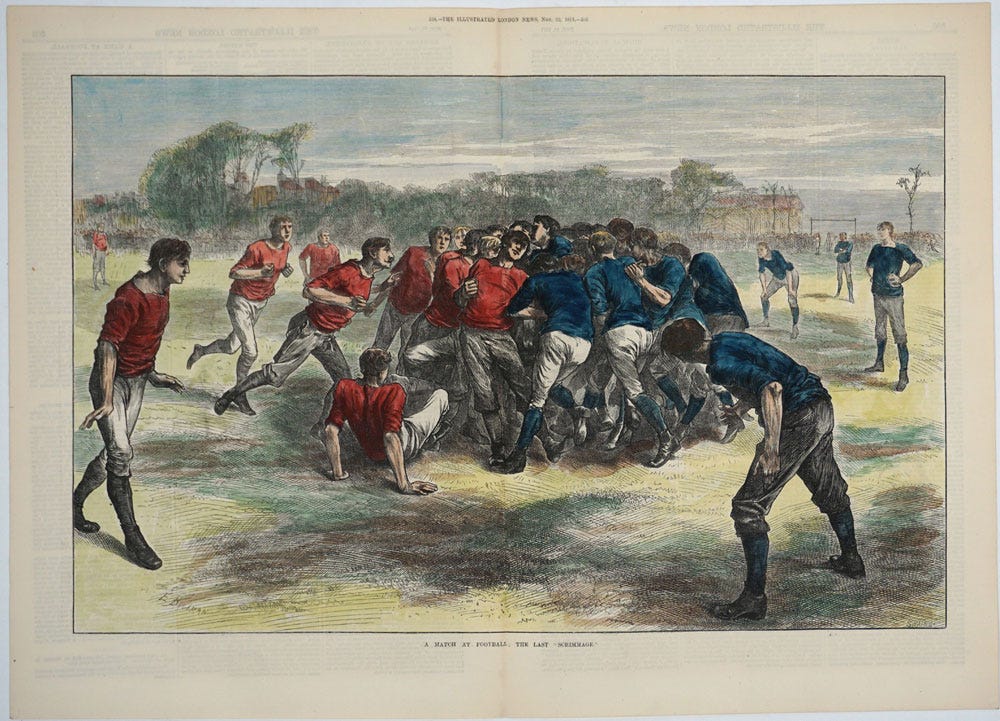Today's Tidbit… 1876 IFA Rule #11: Scrimmage
This is #11 in a series covering football’s original 61 rules adopted by the Intercollegiate Football Association in 1876. We review one rule each Friday.
Scrimmage arose in the 15th century as a variation of skirmish or a short fight. That sense of scrimmage appeared in American newspapers by 1828, seeing far greater use than scrummage, a term used primarily in the context of rugby. So, when the IFA adopted Rule #11 in 1876, they modified rugby’s rule by substituting scrimmage for scrummage, leaving the rest of the rule as is.
Rule 11: A scrimmage takes place when the holder of the ball, being in the field of play, puts it on the ground in front of him, and all who have closed around on the respective sides endeavor to push their opponents back, and by kicking the ball, to drive it in the direction of the opposite goal-line.
In 1876, the scrummage or scrum was a more significant part of rugby. Teams advanced the ball in the scrum or maul by kicking it forward rather than heeling it backward for a teammate to pick up and run with it. That changed, of course, as the rushing portion of the game became increasingly critical to rugby and football.
Changing from the scrummage to scrimmage in 1876 was little more than a name change. Both teams still had equal opportunity to kick or rush the ball toward their opponent’s goal, but an 1880 rule changed all that. Walter Camp and his friends at Yale wanted a more “scientific” game that did not leave possessing the ball to chance, so the rules changed to allow one team to retain the ball from play to play.
During the next two seasons, teams typically punted if they failed to move the ball. However, Princeton violated that gentlemen’s agreement by retaining the ball and applying a loophole or two to stall in several critical games to gain a tie. (Princeton was the 1879 IFA champion, and another team had to beat them to take the title. Princeton remained the title holder in the case of a tie.) To combat Princeton’s ungentlemanly behavior, the IFA changed the rules in 1882 by requiring teams to advance the ball five yards (or lose ten) in three downs.
Starting plays from a controlled scrimmage and allowing teams to retain possession of the ball pushed football toward a set-piece game with predesigned and scripted play, unlike the free-flowing style of rugby and soccer.
For previous stories in the series, click Intro | Rules #1 Drop Kick | #2 Place Kick | #3 Punt | #4 Goal Posts | #5 Goal | #6 Goal ≠ Punt | #7: Scoring | #8: Dead Ball | #9: Touchdown | #10: Tackle
Football Archaeology is reader-supported. Click here to buy one of my books or otherwise support the site.


